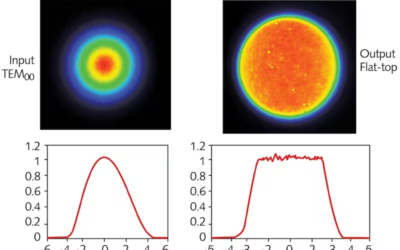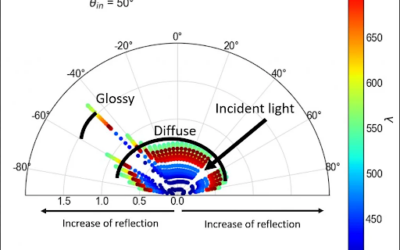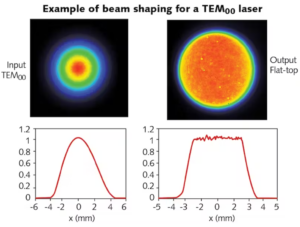When I was a young undergrad engineering student, I always found optics to be a very confusing subject. It was not only the equations, but what it looked like hundreds of different definitions involved in even the simplest of optical systems. Some concepts, like radius of curvature, f-number, and focal point were easy to understand while others, like principal plane, entendue, and Seidel’s aberrations were more complicated.
In today’s article, I want to talk about some basic definitions in optical systems, specifically, the cardinal points. If you are an experienced optical engineer, these definitions will be familiar but if you are looking to work with an optical engineer, these definitions may help you to better understand and communicate the design process.
We are going to start our definitions with the help of a thick lens. Thick lenses are those in which the lens thickness is not ignored. When working with thick lenses, we assume that the light is refracted in two different surfaces. We prefer to work with thick lenses because it gives us better results ( even if it’s more complicated than thin-lenses).
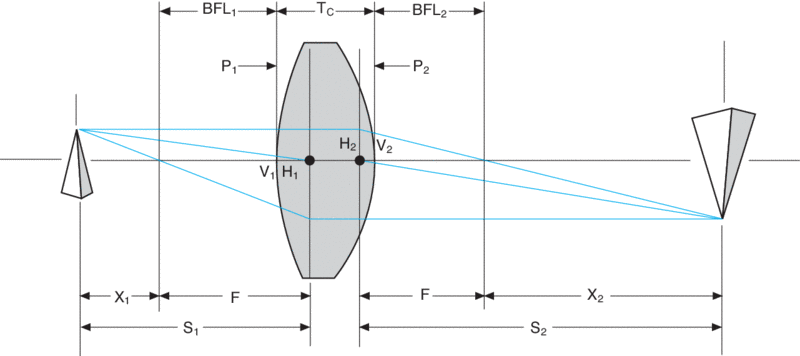
Figure 1. Thick lens optical system. Figure from Newport.
At first look, Figure 1 looks quite intimidating (at least that’s how I remember feeling back in school), but with a little bit of patience, we will describe every element in the figure.
The cardinal points help us define the image properties of an optical system. Cardinal points can be used to construct the image of an arbitrary point in space for objects in the paraxial region. The paraxial region is the region around the system’s axis of symmetry. We have three pairs of cardinal points: principal, nodal, and focal points.
Principal Planes and Principal points.
Let’s start with principal planes (the vertical lines across H1, and H2 in Figure 1). The principal planes are an hypothetical plane where we assume refraction takes place. Imagine an incident ray parallel to the optical axis that extends its path beyond the first lens surface. For a parallel incident ray, we can find the emerging ray path (which passes through the image focal point after being refracted by the second lens surface). The rays’ path is extended until they intersect. We repeat this process for different incoming parallel rays (each at different heights) and the points of intersection are the principal planes. The principal planes are crucial in defining the system’s optical properties since it is the distance of the object and image from the front and rear principal planes that determines the system’s magnification. The principal points are the intersections of the principal plane with the optical axis.
Nodal points
Nodal points have an interesting property in that when a light ray is incident at one of them, the refracted beam will appear to have come from the other nodal point. We can say that the nodal points define a location with unit angular magnification. They can also help us define the lens’ optical center-where the nodal ray intersects the optical axis.
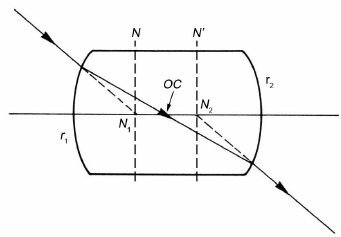
Fig. 2. The optical center is where the nodal ray crosses the optical axis. FIgure from R.B Johnson
Focal Points
In an optical system, we have front and back focal points, and effective focal points, which are similar but not the same. We are going to first define what is a focal point. A focal point has a property that any ray that passes through it will emerge parallel to the optical axis once it goes through the optical system. Similarly, any ray parallel to the optical axis that passes through the optical system will converge into the focal point.
The front and back focal points (BFL1 and BFL2) are the distances along the optical axis from the surface of the lens to the focal points. The effective focal length is the distance from the nodal point to the focal point.
Vertices
The vertices, V1 and V2 in Figure 1 are the physical points at which the lens crosses the optical axis. These are measurable points that help us set the lens’ position. So, in many cases, the cardinal points use the vertices as reference points.
Final Words
Hopefully, these short explanations will help you next time in reading the description of an optical system, or if you are in the process of developing one, you can communicate better what parameters need to be corrected. If you would like for me to go through other optical definitions please let me know in the comments. I would love to hear from you.

